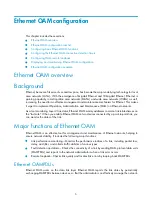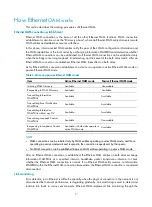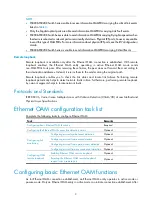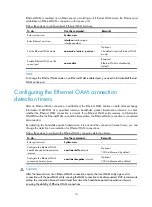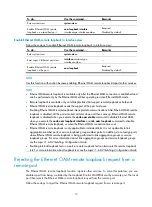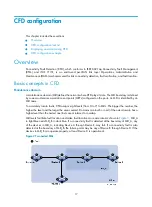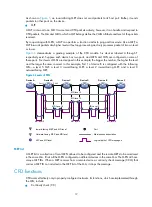
5
Ethernet OAM configuration
This chapter includes these sections:
•
•
Ethernet OAM configuration task list
•
Configuring basic Ethernet OAM functions
•
Configuring the Ethernet OAM connection detection timers
•
Configuring OAM remote loopback
•
Displaying and maintaining Ethernet OAM configuration
•
Ethernet OAM configuration example
Ethernet OAM overview
Background
Ethernet, because of its ease of use and low price, has become the major underlying technology for local
area networks (LANs). With the emergence of Gigabit Ethernet and 10-Gigabit Ethernet, Ethernet is
gaining popularity in metropolitan area networks (MANs) and wide area networks (WANs) as well,
increasing the need for an effective management and maintenance mechanism for Ethernet. This makes
it urgent to implement Operation, Administration and Maintenance (OAM) on Ethernet networks.
As a tool monitoring Layer 2 link status, Ethernet OAM mainly addresses common link-related issues on
the “last mile.” When you enable Ethernet OAM on two devices connected by a point-to-point link, you
can monitor the status of the link.
Major functions of Ethernet OAM
Ethernet OAM is an effective tool for management and maintenance of Ethernet networks, helping to
ensure network stability. It includes the following major functions:
•
Link performance monitoring—Monitors the performance indices of a link, including packet loss,
delay, and jitter, and collects traffic statistics of various types
•
Fault detection and alarm—Checks the connectivity of a link by sending OAM protocol data units
(OAMPDUs) and reports to the network administrators when a link error occurs
•
Remote loopback—Checks link quality and locates link errors by looping back OAMPDUs
Ethernet OAMPDUs
Ethernet OAM works on the data link layer. Ethernet OAM reports the link status by periodically
exchanging OAMPDUs between devices, so that the administrator can effectively manage the network.















